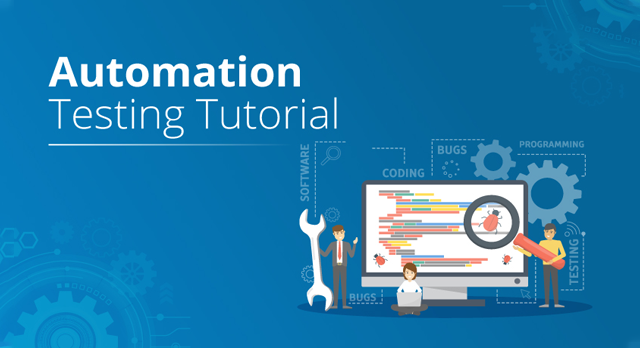From Manual to Automated Testing: A Comprehensive Overview to Transitioning Efficiently and Successfully
In the world of software application testing, the change from guidebook to automated processes has come to be a progressively important change for organizations seeking to boost efficiency and precision in their testing practices. The trip from manual to automated screening is not without its difficulties, but when come close to strategically and with a clear strategy in mind, the benefits can be substantial.
Advantages of Automated Testing
Automated testing uses countless advantages, enhancing effectiveness and precision in software development processes. Automated examinations can be run simultaneously on several devices and operating systems, considerably speeding up the screening stage contrasted to hand-operated screening.
Moreover, automated screening makes certain a greater level of accuracy in identifying defects. Since automated tests follow predefined scripts, human mistake is minimized, resulting in more trusted test results. Uniformity in testing is likewise enhanced, as automated examinations execute the exact same steps exactly each time they are run. This uniformity is crucial in ensuring that all functionalities of the software are extensively checked, lowering the probability of undiscovered bugs slipping through to production.
Choosing the Right Devices

To start with, analyze your objectives and requirements. Understand the scope of your project, the technologies included, and the skill set of your group. This analysis will aid you establish the capabilities and features you call for in your screening devices.
Second of all, think about the compatibility of the tools with your existing procedures and systems. Seamless integration with your existing software program advancement lifecycle is vital to make certain a smooth shift to automation.
Furthermore, assess the scalability and flexibility of the devices. As your testing requires develop, the tools need to have the ability to adapt and suit modifications effectively.
Last but not least, consider the support and area around the devices. When executing automated screening, robust assistance and an active customer community can give important resources and help. By thoroughly considering these facets, you can choose the right devices that line up with your needs and set the phase for an effective transition to automated screening.
Writing Efficient Examination Manuscripts

When crafting test manuscripts, it is necessary to think about the specific demands of the software application being tested and make certain that the scripts address all important performances. Descriptive and clear naming conventions for examination scripts and test situations can enhance readability and maintainability. Furthermore, including helpful hints error handling systems within the examination scripts can assist in identifying and attending to concerns quickly.
Moreover, organizing examination scripts into modular elements can enhance reusability and scalability, reducing redundancy and improving efficiency in test script maintenance. Normal evaluations and updates to test manuscripts are essential to equal progressing software application requirements and functionalities. By adhering to these concepts, testers can create effective and durable test manuscripts that add considerably to the success of automated screening processes.
Integrating Automation Into Workflows
By flawlessly integrating automated screening tools like Selenium or Appium into the software application development lifecycle, groups can achieve faster responses on code changes, leading to quicker pest discovery and resolution. This assimilation permits for constant screening throughout the development procedure, guaranteeing that any kind of issues are recognized early on, resulting in higher software application quality. Appropriate integration of automation devices requires cooperation between growth, screening, and procedures teams to establish a unified operations that enhances efficiency and performance in delivering high-grade software products.
Making Certain a Smooth Shift
Efficiently transitioning to automated testing includes thorough planning and cautious implementation to decrease disturbances and maximize effectiveness in the software development procedure - automation testing. To make certain a smooth transition, it is crucial to start by conducting a detailed assessment of the existing screening procedures and recognizing locations where automation can bring one of the most significant benefits. Involving with all stakeholders early at the same time, including developers, testers, and project managers, is essential for garnering support and buy-in for the automation campaign
Interaction is key during this transition phase. Clear interaction of the objectives, advantages, and assumptions of automated screening assists to take care of any kind of resistance or concerns that may arise. In addition, giving appropriate training and sources for employee to upskill in automation tools and techniques is vital for ensuring an effective change.

Conclusion
Finally, transitioning from handbook to automated screening offers various benefits, consisting of raised efficiency and reliability. By selecting the proper devices, writing effective test scripts, and integrating automation effortlessly right into workflows, organizations can make sure a effective and smooth transition. It is necessary to accept automation as a useful property in software program testing processes to improve overall high quality and efficiency.
In the realm of software testing, the change from guidebook to automated procedures has ended up being a progressively important transition for organizations looking for to improve effectiveness and accuracy in their testing practices. Automated tests can be run at the same time on multiple devices and operating systems, substantially speeding up the screening phase compared to hand-operated screening. Uniformity in screening is additionally enhanced, as automated tests carry out the exact same actions specifically each time they are run.To Source make sure the successful implementation of selected screening tools, the development of efficient test scripts plays a critical duty in confirming the performance and performance of automated processes - automation testing. By adhering to these concepts, testers can produce robust and effective examination scripts that contribute dramatically to the success of automated screening procedures